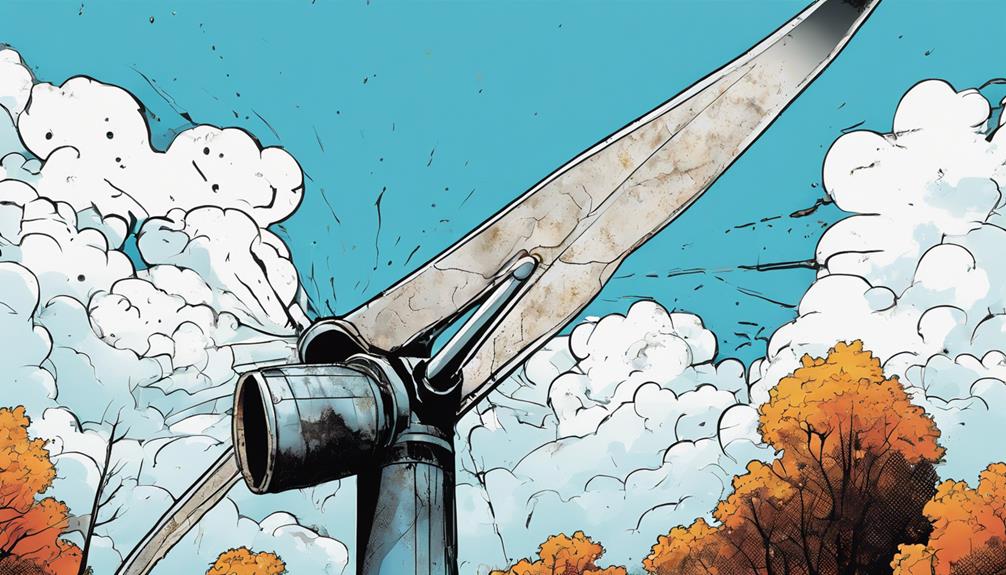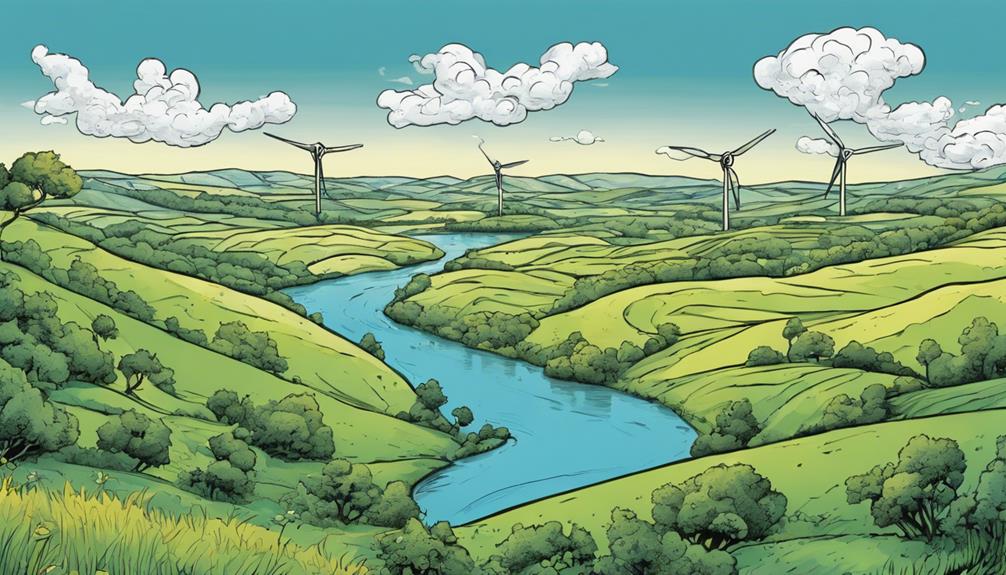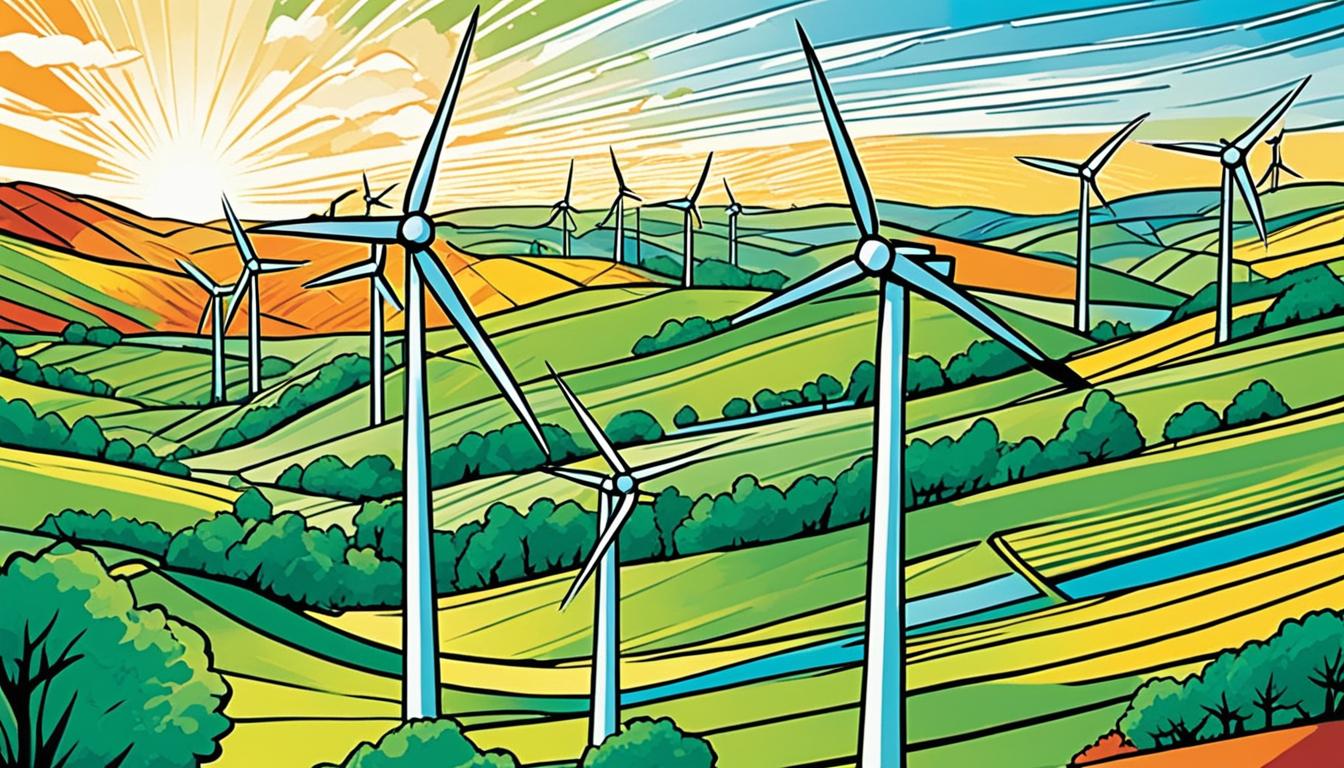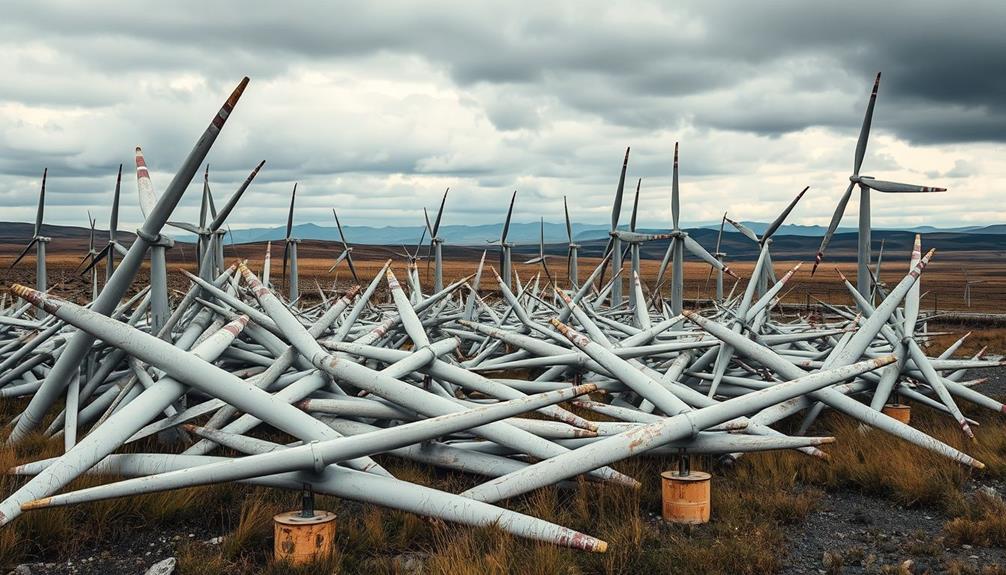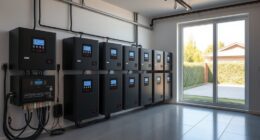We're dependent on oil to keep wind turbines running smoothly, but this reliance comes with a hefty environmental price tag that undermines the very sustainability wind energy is supposed to provide. Oil is important for lubrication, cooling, and smooth operation, but its extraction, refinement, and transportation contribute to carbon emissions. Additionally, oil spills and leaks can harm ecosystems and wildlife, and disposing of used oil poses environmental risks. As we explore ways to minimize our reliance on oil, we're discovering sustainable alternatives and innovative solutions that can reduce the carbon footprint of wind energy. Let's take a closer look at the impact of oil on wind turbine sustainability.
Key Takeaways
- Oil reliance in wind turbines contributes to indirect environmental impacts through extraction, refinement, and transportation emissions.
- Regular oil changes, level checks, and analysis are crucial for turbine performance, but pose environmental risks through disposal and spills.
- Sustainable alternatives, such as bio-based lubricants and oil-free solutions, are being developed to mitigate the environmental impact of wind turbines.
- Improving energy efficiency through lubrication and low-friction materials is vital for creating a more sustainable wind energy ecosystem.
- Efficient oil recycling and waste management practices are being implemented to reduce the carbon footprint of wind energy.
Oil Usage in Wind Turbines

As we delve into the inner workings of wind turbines, it becomes clear that oil plays a vital role in maintaining their performance and longevity. We're talking about lubrication, cooling, and smooth operation – all of which rely on oil.
Take wind turbine blades, for instance. Made of composite materials like fiberglass, they require regular lubrication to function optimally.
Then there are gearboxes, which need oil to run smoothly and last longer. Proper oil levels in bearings are also essential for seamless operation.
And let's not forget generator systems, which depend on oil for lubrication and cooling. It's clear that oil is necessary for wind turbines to operate efficiently and effectively.
Maintaining Turbine Performance
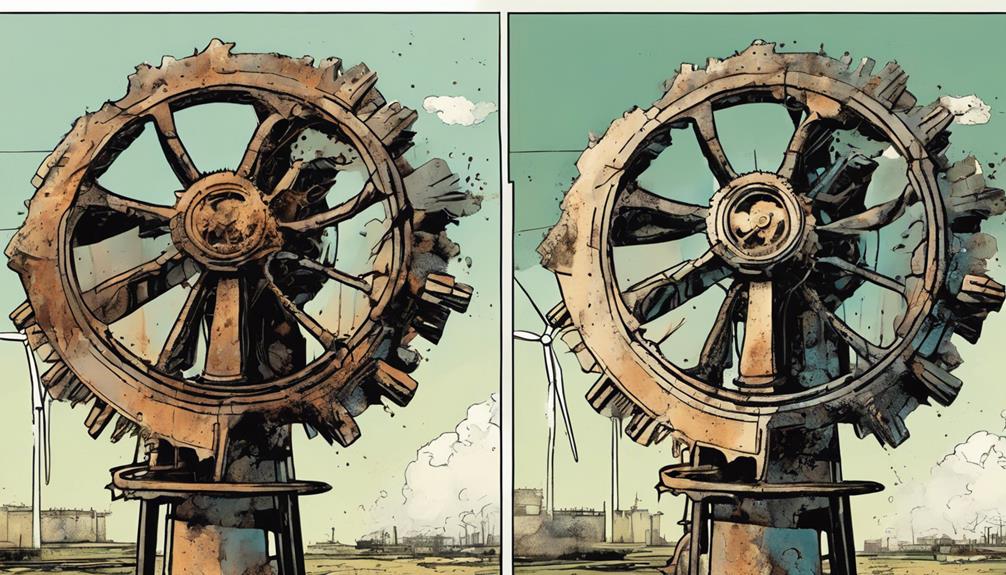
We need to make sure that our wind turbines are operating at their peak, which means regularly changing and monitoring the oil to prevent deterioration and pollution. This maintenance is essential to guarantee peak performance and longevity. By doing so, we can reduce the risk of breakdowns and expensive repairs.
| Maintenance Task | Frequency |
|---|---|
| Oil changes | Every 5,000 hours |
| Oil level checks | Daily |
| Oil analysis | Quarterly |
| Filter replacements | Every 10,000 hours |
| Bearing inspections | Annually |
Environmental Impact of Oil
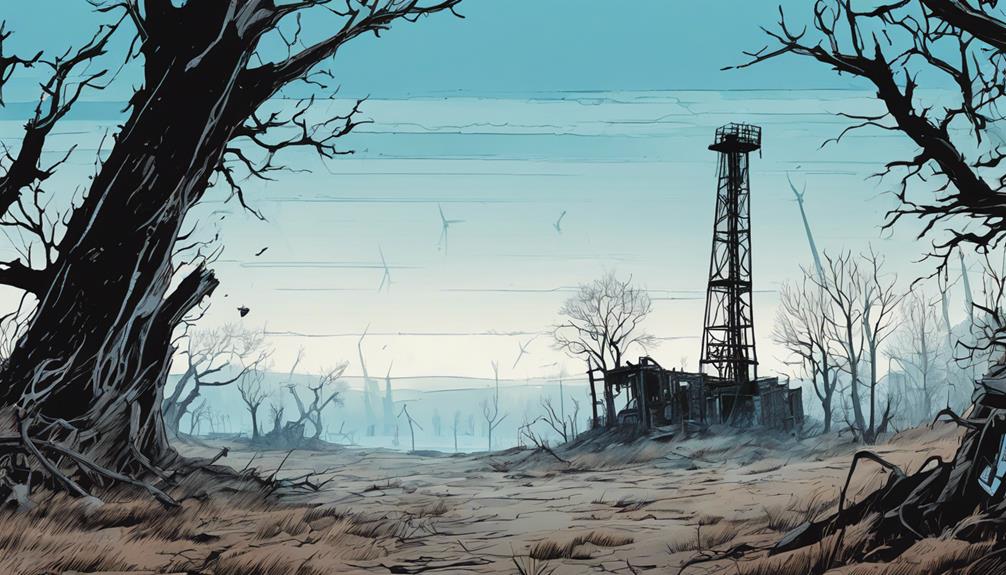
Despite wind turbines being praised as eco-friendly, our reliance on oil for their operation results in indirect environmental impacts that can't be overlooked. The extraction, refinement, and transportation of oil for turbine production contribute to carbon emissions, contradicting the very purpose of wind energy.
Furthermore, oil spills and leaks during oil-related activities can harm ecosystems and wildlife. The disposal of used oil and lubricants from wind turbines poses environmental risks, further complicating the issue.
It's essential we acknowledge these challenges and work towards sustainable alternatives. By doing so, we can guarantee that wind energy lives up to its promise of being a clean and environmentally friendly source of power.
Sustainable Alternatives Emerging
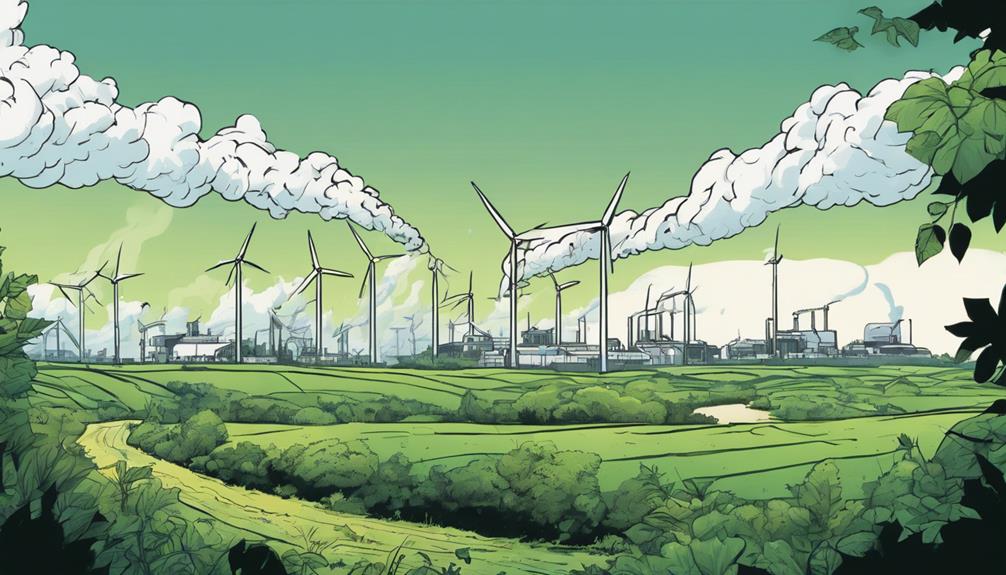
Researchers are increasingly turning to bio-based lubricants and greener materials for turbine manufacturing, driving innovation towards oil-free wind energy solutions.
We're observing notable advancements in this area, with new technologies emerging that can decrease our reliance on oil. For instance, some companies are developing self-sustaining lubrication systems for offshore wind farms, eliminating the need for oil altogether.
Additionally, efficient oil recycling and waste management practices are being implemented to minimize environmental impacts.
We believe that these sustainable alternatives will play an essential role in creating a greener future for wind energy. By adopting these innovations, we can notably reduce our carbon footprint and move closer to achieving oil-free wind energy.
Enhancing Energy Efficiency
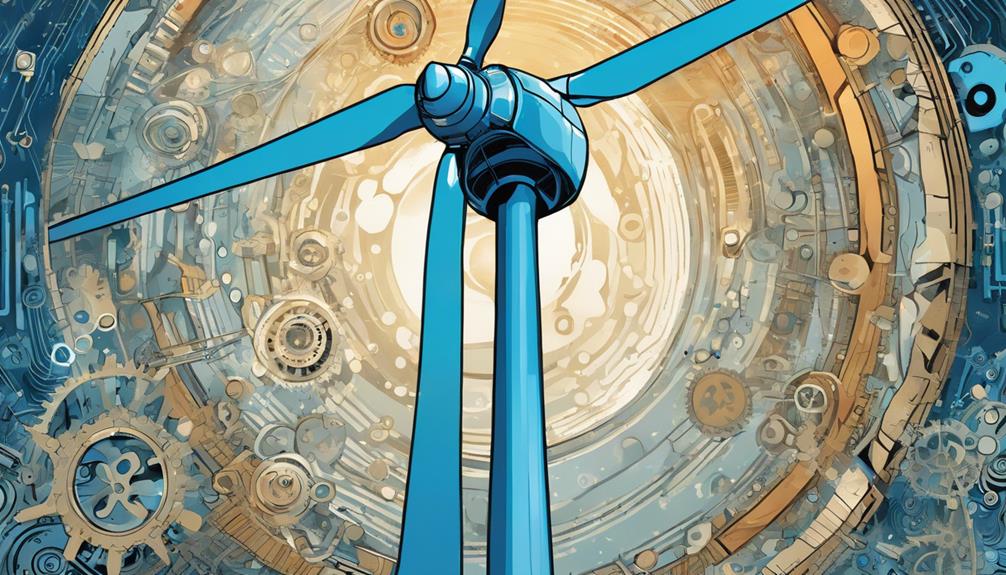
As we embrace sustainable alternatives, our focus shifts to enhancing energy efficiency, where minimizing friction and energy loss become essential to optimizing wind turbine performance.
It's common knowledge that total mechanical energy remains constant in isolated systems, but friction leads to energy loss. That's why we're exploring the use of lubrication and low-friction materials to decrease energy wastage. By doing so, we can improve energy efficiency and guarantee sustainable resource use.
This approach not only reduces environmental impact but also promotes a greener future. By optimizing energy efficiency, we're taking an important step towards creating a more sustainable wind energy ecosystem.
We're dedicated to making wind energy cleaner, greener, and more efficient for generations to come.
Frequently Asked Questions
How Do You Measure the Environmental Impact of Wind Turbine Oil Usage?
"We measure the environmental impact of wind turbine oil usage by tracking carbon emissions from extraction, refining, and transportation, as well as monitoring oil spills, leaks, and disposal to assess the overall ecological footprint."
Can Oil-Free Wind Turbines Compete With Traditional Turbines in Terms of Cost?
As we ponder the future of wind energy, we wonder: can oil-free wind turbines really rival traditional ones in cost? The answer is yes, and we're on the cusp of a revolution that'll change the game.
What Role Do Government Regulations Play in Promoting Sustainable Wind Energy Practices?
'We believe government regulations play an essential role in promoting sustainable wind energy practices by setting standards, incentivizing innovation, and enforcing environmental safeguards, ultimately driving the industry towards a greener future.'
How Does the Lifespan of Oil-Free Wind Turbines Compare to Traditional Turbines?
"We're trading one environmental concern for another – oil-free wind turbines may last longer, but their increased production energy and resource demands might offset the benefits, making traditional turbines seem, well, not so bad after all."
Can Individual Consumers Invest in Oil-Free Wind Turbine Technology for Personal Use?
'We can invest in oil-free wind turbine tech for personal use, but it's vital to keep in mind the initial high costs, space requirements, and local regulations before making a decision that suits our needs.'
How Does Oil Impact the Longevity and Sustainability of Wind Turbines?
Oil has a significant impact on the longevity and sustainability of wind turbines. It is one of the key factors impacting wind turbine longevity. Proper lubrication with high-quality oil can help reduce wear and tear, extend the lifespan of the turbine, and improve its overall performance and sustainability.
Conclusion
As we look to the future of wind energy, we're forced to confront the irony: can we truly call ourselves sustainable if our clean energy relies on a dirty secret?
The answer lies in innovation. By embracing oil-free alternatives and optimizing turbine design, we can break free from oil's grip and reveal the full potential of wind power.
Will we seize this opportunity to redefine what it means to be sustainable, or will we remain stuck in the status quo?
